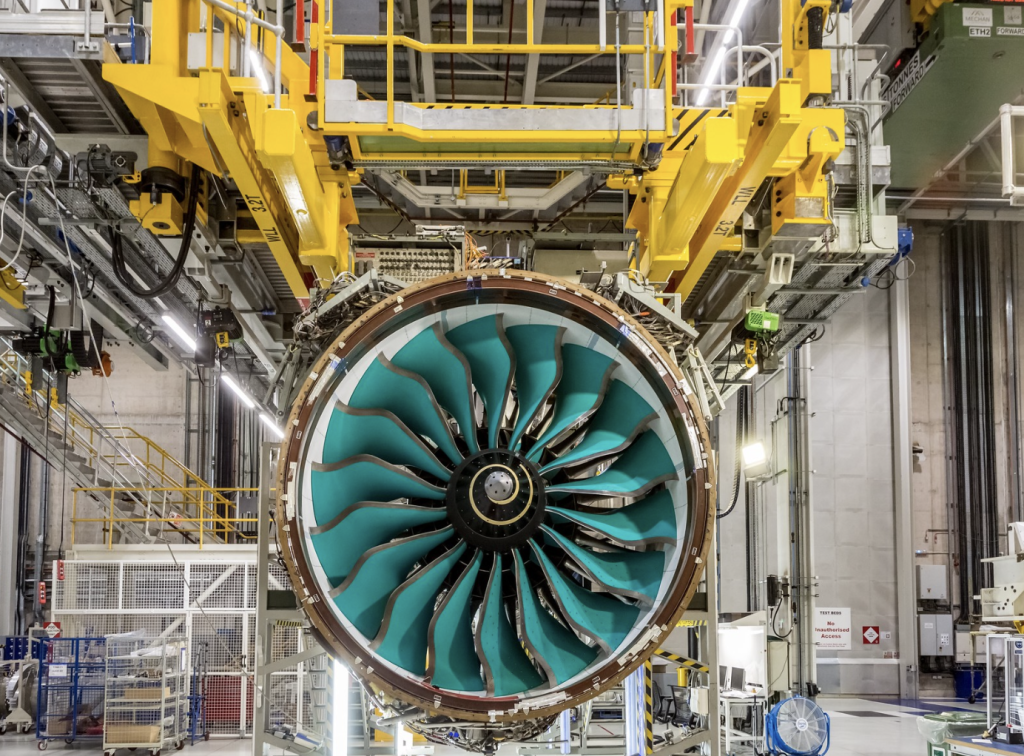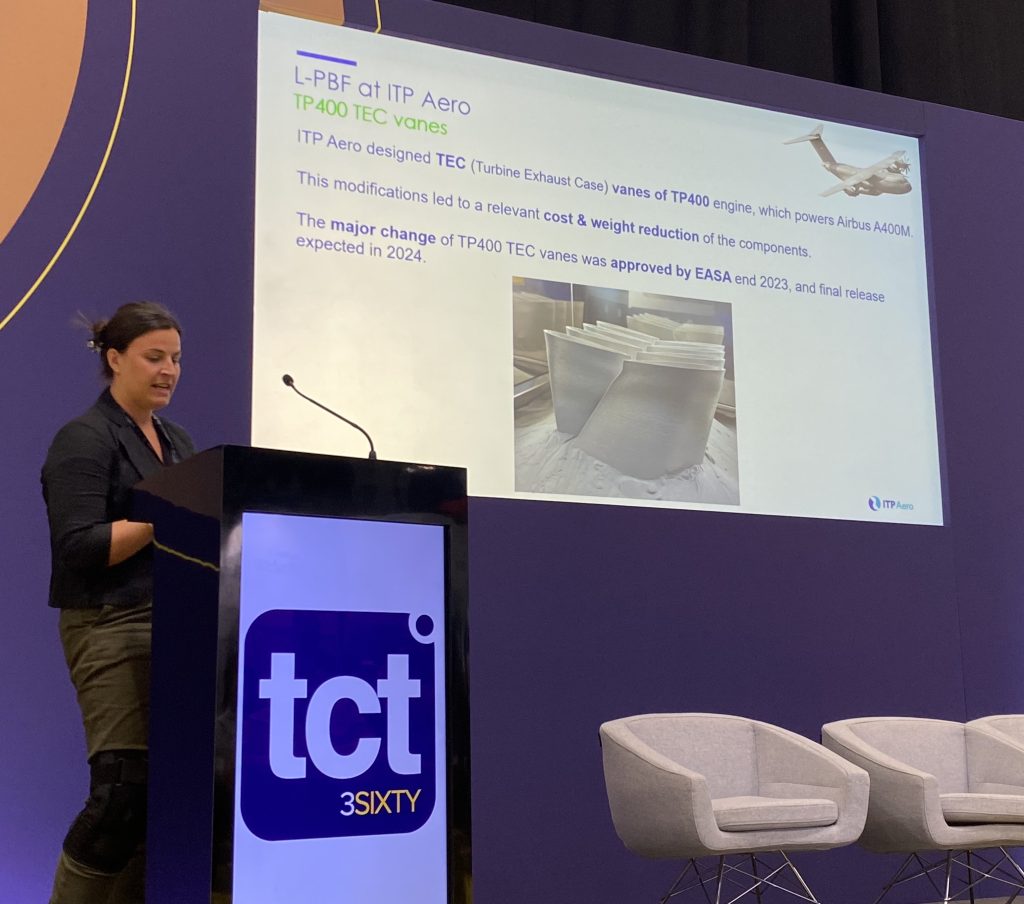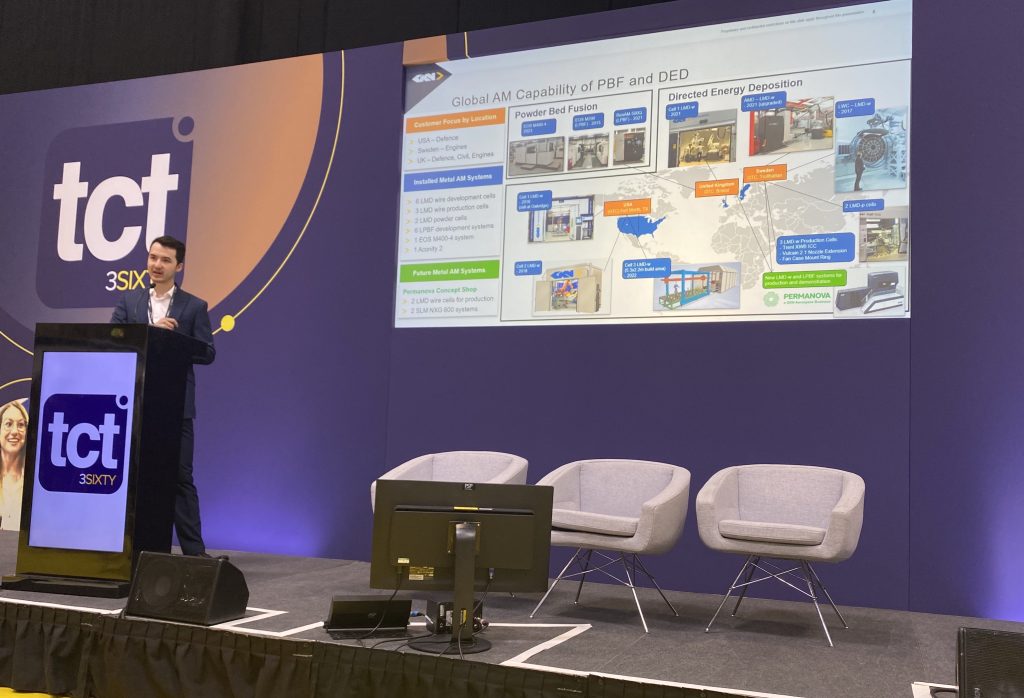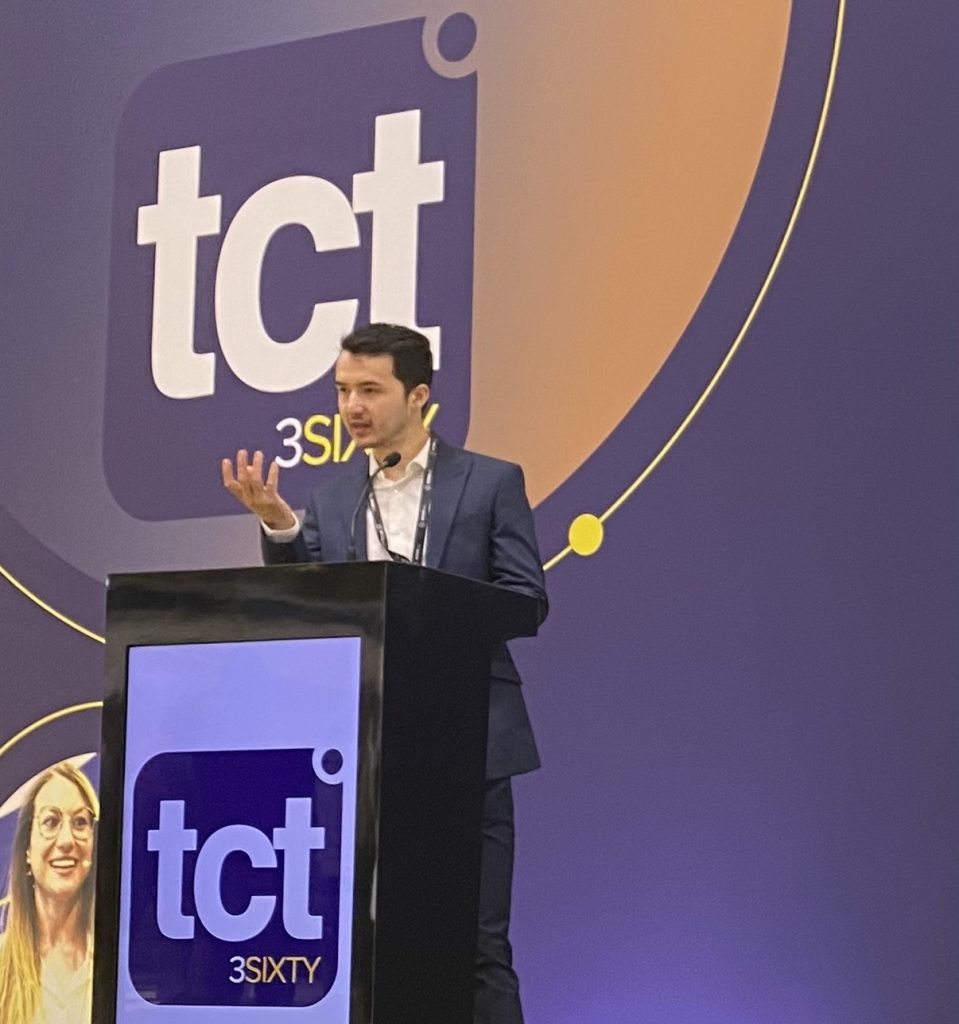Ahead of the inaugural online event Additive Manufacturing Advantage: Aerospace, Space, and Defense 3D Printing Industry is running a series of articles focused on the application of 3D printing in these critical sectors. Register now for AMAA 2024 on July 16th to hear more insights from sector leaders.
At TCT 3Sixty 2024, keynote speakers offered insights on 3D printing for aerospace applications.
Sarah Everton, Manufacturing Engineer at engine company ITP Aero, explained the benefits of design for additive manufacturing (DfAM) for the production of commercial aircraft engines. She presented real-world case studies where 3D printing has enabled substantial savings in weight, time and money.
Liam Pang, from UK-based aerospace supplier GKN Aerospace, also took to the stage. The Senior Research Engineer explained the main advantages and benefits of 3D printing and identified the barriers impeding more widespread adoption.
Pang highlighted the key challenges related to certification and qualification, and explained why 3D printing “is not the solution for every problem.”
Looking to the future, both speakers emphasized the importance of collaboration within the additive manufacturing and aerospace industries. “If we’re all able to collaborate across sectors and technology disciplines, we will be able to really succeed,” added Pang.
Read all the news from TCT 3Sixty 2024

3D printing aircraft engines at IPT Aero
A tier-one supplier to the aerospace sector, Everton introduced ITP Aero as one of the top ten aero-engine manufacturers in the world. The company designs, manufactures and validates critical subsystems for Airbus, Dassault Falcon, Gulfstream, Bombardier and Cessna aircraft.
According to Everton, the development of proprietary additive manufacturing technology is part of the “core company strategy to grow.” ITP primarily utilizes laser powder bed fusion (LPBF), which is “the most developed of our additive technologies.”
One case study Everton highlighted was an LPBF-3D printed tail-bearing housing structure for UK-based engine manufacturer Rolls-Royce’s UltraFan Program. The UltraFan is the world’s largest aero-engine demonstrator. It incorporates a suite of new engine technologies which reportedly enable greater fuel efficiency and lower carbon emissions.
ITP Aero’s contribution is “one of the main engine structures,” joining the aircraft to the engine. She explained that the need to reduce noise was a key digital design consideration. “We’ve got some really challenging certification requirements coming in terms of noise,” stated Everton, including the need to reduce engine noise by 65% by 2050.
Over 80% of the assembly was 3D printed using LPBF, including the veins’ acoustic liners which facilitate 50% engine noise reductions. 3D printing also reduced energy and material requirements by 25%, compared to conventional manufacturing practices.

ITP Aero has 3D printed turbine exhaust case (TEC) vanes for the TP400 engine, which powers the Airbus A400M military aircraft.
Previously, these parts were made from sheet metal, which was welded together. According to Everton, this created “quite a number of problems” with distortion throughout the vanes. As a result, ITP turned to additive manufacturing, consolidating three pieces into a single part. This “simplified everything,” reducing weight and costs by “way over a third.”
The 3D printed engine part was designed with minimal post-processing in mind, and includes “hardly any support structures.” This speeds up the production process and reduces the possibility of damage after 3D printing is complete.
Additive manufacturing also allows the ITP team to accurately predict distortion on the part, and identify the areas of high- and low-stress. Wall thickness can then be varied throughout the part, reducing weight in areas of low stress to further optimize manufacturability and cut costs.
Everton believes “the cost reduction potential of AM is significant,” and that DfAM is a “really important” part of the production workflow.
The 3D printed TP400 TEC vanes were approved by the European Union Aviation Safety Agency (EASA) at the end of 2023, with the final release expected later this year.

GKN Aerospace optimizes production with AM
Generating annual revenues of around $3 billion, GKN Aerospace employs 15,000 people at 38 sites across 12 countries.
Pang emphasized the company’s credentials, boasting that “if you travel by plane today, you will likely encounter many GKN parts.” GKN-3D printed components are used on 100,000 commercial flights every day. These range from 3D printing-enabled jet engines to DfAM-optimized hydraulic adapter blocks.
Across its manufacturing sites, the firm employs a range of metal 3D printers from EOS and Nikon SLM Solutions. It has also developed proprietary directed energy deposition (DED) LMD-w cells to produce large metal parts. According to Pang, these 3D printing capabilities enable substantial material and cost savings for aerospace applications.
Pang highlighted a large-scale aircraft engine component produced at the company’s Trollhättan facility in Sweden. Large castings and forgings are traditionally used to manufacture these sizable parts, creating around 400 kg of metal waste in the process.
By using additive manufacturing, GKN Aerospace is now able to “deposit the material where we need it,” which reduces material usage by up to 80%. This translates to a 90% reduction in material waste, and 35% CO2 savings.

He also pointed to GKN Aerospace’s ongoing collaboration with the European Space Agency and aerospace firm Ariane Group to produce reusable rocket engine turbines for the Ariane 6 rocket.
Leveraging laser powder bed fusion 3D printing, the company has achieved 90% cost reductions on the turbines. What’s more, GKN has reduced the number of parts from over 100 using conventional manufacturing processes, to just two with 3D printing.
GKN Aerospace is also developing a “new material solution” which offers an alternative to large casting and forgings. The company combines multiple smaller castings, forgings and 3D printed parts into lighter, complex components.
According to Pang, this approach lowers costs, improves quality and enhances design flexibility. It also offers an improved buy-to-fly ratio, lowering weight and reducing waste. He stated that this approach removes reliance on external supply chains, positioning the company well for the development of “new aircraft and next-generation aerospace applications.”

How to increase the adoption of AM in aerospace?
Pang believes that additive manufacturing still faces pertinent challenges in aerospace applications. He highlighted the difficulty in achieving repeatability and the problems this poses for manufacturers.
Indeed, aerospace parts must adhere to strict qualification and certification requirements. Manufacturers need good knowledge of key product characteristics and processes, and should “understand the complex nature of how they all integrate.”
The need for greater collaboration on certification standards was also alluded to. “We write our own standards and others write their own standards,” explained Pang. He believes certification bodies need to work together to ensure that the “standards are good and can be widely adopted.”

Moreover, Pang argued that the productivity of 3D printing needs to improve to provide a more attractive return on investment. This requires a move towards “high-throughout 3D printing factories” that are fully automated.
He also pointed to the “soft challenges” which are also limiting the adoption of additive manufacturing. Significantly, “there’s a big skill gap” as 3D printing is still a relatively young technology in the world of industrial manufacturing.
Pang believes that more targeted education is required on DfAM. He argued that the industry needs to understand that “AM is not the solution to every problem” and instead identify where 3D printing adds the most value.
Register now for AMAA 2024 to hear insights from industry experts on additive manufacturing in aerospace, space, and defense.
Want to help select the winners of the 2024 3D Printing Industry Awards? Join the Expert Committee today.
What does the future of 3D printing hold?
What near-term 3D printing trends have been highlighted by industry experts?
Subscribe to the 3D Printing Industry newsletter to keep up to date with the latest 3D printing news.
You can also follow us on Twitter, like our Facebook page, and subscribe to the 3D Printing Industry Youtube channel to access more exclusive content.

